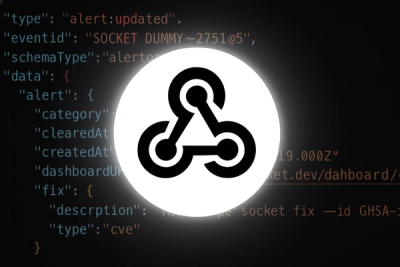
Research
/Security News
Shai Hulud Strikes Again (v2)
Another wave of Shai-Hulud campaign has hit npm with more than 500 packages and 700+ versions affected.
@vivocha/request-retry
Advanced tools
HTTP requests with configurable retries and API utilities.
Vivocha Request-Retry is a library to call API endpoints / do HTTP calls with configurable, automatic, call retries in case of errors.
It dependes from request-promise-native module, and it also exports all from request module as classicRequest, and exports all from request-promise-native as requestPromise.
This library exposes the following classes.
APIClientGeneral HTTP client with configurable retry option.
call(options: APICallOptions)Quick Examples (TypeScript):
1) Do a GET call to https://my-super-server.test-api.com:8443/api/things with a maximum of 3 retries in case of any error, waiting for 2000ms before each retry
const client = new APIClient('https://my-super-server.test-api.com:8443');
const opts: APICallOptions = {
method: 'get',
path: '/api/things',
json: true,
retries: 3,
retryAfter: 2000
};
const result = await client.call(opts);
2) Do an authenticated POST call to https://my-super-server.test-api.com:8443/api/things, with a maximum of 5 retries in case of any error excluding a 401, waiting for 1000ms before each retry
const client = new APIClient('https://my-super-server.test-api.com:8443');
const opts: APICallOptions = {
method: 'post',
path: '/api/things',
authOptions: {
authorizationType = 'Bearer',
token: 'abcd-1234'
},
json: true,
body: {
type: 'lamp'
model: 'X-100'
},
retries: 5,
retryAfter: 1000,
doNotRetryOnErrors: [401]
};
const result = await client.call(opts);
3) Do a GET call to https://my-super-server.test-api.com:8443/api/things with a maximum of 3 retries in case of any error, waiting for 2000ms before each retry and getting a full HTTP response
const client = new APIClient('https://my-super-server.test-api.com:8443');
const opts: APICallOptions = {
method: 'get',
path: '/api/things',
json: true
retries: 3,
retryAfter: 2000,
getFullResponse: true
};
const result = await client.call(opts);
APICallOptions is an object with the following properties:
{
method: 'get' | 'post' | 'put' | 'delete' | 'options' | 'head' | 'patch';
path: string;
qs?: any;
body?: any;
headers?: any,
json?: boolean,
authOptions?: HTTPAuthOptions;
timeout?: number;
retries: number;
retryAfter: number;
doNotRetryOnErrors?: number[];
getFullResponse?: boolean;
}
Properties are listed in the following table (required ones in bold):
| PROPERTY | VALUE | DESCRIPTION |
|---|---|---|
method | (optional) string: get or post or put or delete or options or head or patch | HTTP method of the request (default is get) |
path | (optional) string | relative (to baseUrl, constructor param) path of the endpoint to call (default is '') |
qs | (optional) object | query string params |
body | (optional) object | JSON body to send to the endpoint |
json | (optional) boolean | if true, let request automatically send and parse JSON bodies, setting the headers properly. Default is false, and headers must be set accordingly |
headers | (optional) object | HTTP headers to send |
authOptions | (optional) object | See HTTPAuthOptions below |
timeout | (optional) number | set timeout value, in milliseconds |
retries | number | Max number of retries in case of error calling the endpoint |
retryAfter | (optional) number | Number of milliseconds to wait before each call retry. If set it takes precedence over minRetryAfter (see Configuring Retries section in this document) |
minRetryAfter | (optional) number | Number of milliseconds to wait before the first call retry. Then, waiting time before the next calls is computed doubling the previous waiting time + a random amount of milliseconds. When maxRetryAfter threshold is reached, waiting time become constant to maxRetryAfter, if set (see Configuring Retries section in this document). |
maxRetryAfter | (optional) number, default is 10 minutes | Max number of milliseconds to wait before next call retry (see Configuring Retries section in this document) |
doNotRetryOnErrors | (optional) array of HTTP error codes. Codes can be mixes of numbers (e.g., 401, 404, ...) or strings (e.g., "429", "500") or string patterns, like 5xx or 40x | The client WILL NOT retry the call in case of an HTTP error code included in this array. Moreover, it is now possible to use string patterns to match entire classes of status codes. Patterns are in the form of <code-family>xx or <code-family>0x, where <code-family> is the first number of the code (i.e., 5, 4, ...). For example: "4xx" will exclude from retrying responses with status codes like 400, 429, 401, ...; where a pattern like "40x" will exclude from retrying status codes like 400 and 401 but not 429. |
getFullResponse | (optional) boolean | when true, the client returns the full HTTP Response object, default is false (only body is returned) |
where HTTPAuthOptions is an object as follows:
{
authorizationType?: string;
token?: string;
user?: string;
password?: string;
}
| PROPERTY | VALUE | DESCRIPTION |
|---|---|---|
authorizationType | (optional) string | Authentication type different from Basic, like: Bearer, App,... If specified, the token property is required |
token | (optional) string | Authentication token |
user | (optional) string | username for Basic Authentication, if specified then password property is required |
password | (optional) string | password for Basic Authentication, if specified then user property is required |
The following static, async methods are shortcuts for the call() method to use common HTTP methods. They all return a Promise with the results.
APIClient.get(url: string, options: APICallOptions = { retries: 2, retryAfter: 1000 }, logger?: Logger)ApiClient.post(url: string, body: any, options: APICallOptions = { retries: 2, retryAfter: 1000 }, logger?: Logger)APIClient.put(url: string, body: any, options: APICallOptions = { retries: 2, retryAfter: 1000 }, logger?: Logger):APIClient.delete(url: string, options: APICallOptions = { retries: 2, retryAfter: 1000 }, logger?: Logger)APIClient.patch(url: string, body: any, options: APICallOptions = { retries: 2, retryAfter: 1000 }, logger?: Logger)APIClient.head(url: string, options: APICallOptions = { retries: 2, retryAfter: 1000, getFullResponse: true }, logger?: Logger)APIClient.call() method (and all the shortcut static methods) can be configured to automatically retry HTTP calls in case of errors.
Call retries configuration can be set using the following APICallOptions specific properties: retries (mandatory), retryAfter (optional), minRetryAfter (optional), and maxRetryAfter (optional).
Briefly, the rules applied for retrying calls are the following:
retries option is the total number of retries to do in case of errors calling a URL; retrying stops when the total number of retries is reached;retryAfter, in milliseconds: if set, before attempting a new call retry, the client will wait for this milliseconds amount.
minRetryAfter is NOT SET then the waiting time is constant between retries, and this value is always used.minRetryAfter is NOT SET then the constant wait time is set to 1000 ms.minRetryAfter, in milliseconds: if set, it is the waiting time before attempting the first retry call; then, if new call retries must be done, the waiting time will be computed using the following formula: 2 * currentWaitingTime + some random millis (between 0 and 50);
maxRetryAfter param is set, then when this value is reached after applying the formula, the waiting time becomes constant and maxRetryAfter is used, until retries number is reached.maxRetryAfter param is NOT SET, default is 10 minutes, and waiting time value continues growing, until the number of retries is reached. But, after 10 min is reached, remaining retries will use this constant value.FAQs
HTTP requests with retry, and API client utilities
The npm package @vivocha/request-retry receives a total of 188 weekly downloads. As such, @vivocha/request-retry popularity was classified as not popular.
We found that @vivocha/request-retry demonstrated a not healthy version release cadence and project activity because the last version was released a year ago. It has 18 open source maintainers collaborating on the project.
Did you know?

Socket for GitHub automatically highlights issues in each pull request and monitors the health of all your open source dependencies. Discover the contents of your packages and block harmful activity before you install or update your dependencies.

Research
/Security News
Another wave of Shai-Hulud campaign has hit npm with more than 500 packages and 700+ versions affected.

Product
Add real-time Socket webhook events to your workflows to automatically receive software supply chain alert changes in real time.

Security News
ENISA has become a CVE Program Root, giving the EU a central authority for coordinating vulnerability reporting, disclosure, and cross-border response.